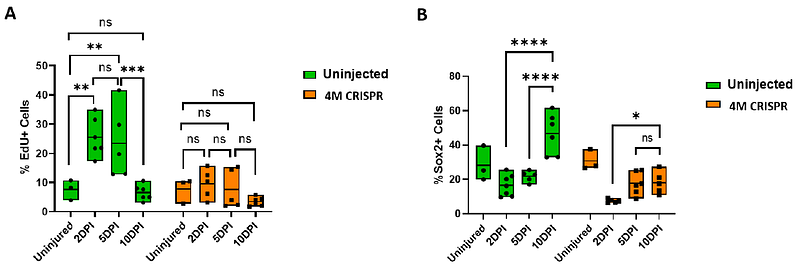Marcks and Marcks-like 1 proteins promote spinal cord development and regeneration in Xenopus

Marcks and Marcks-like 1 proteins promote spinal cord development and regeneration in Xenopus
El Amri, M.; Pandit, A.; Schlosser, G.
AbstractMarcks and Marcksl1 are abundant proteins that shuttle between the cytoplasm and membrane to modulate multiple cellular processes, including cytoskeletal dynamics, proliferation, and secretion. Here, we performed loss- and gain-of-function experiments in Xenopus laevis to reveal the novel roles of these proteins in spinal cord development and regeneration. We show that Marcks and Marcksl1 have partly redundant functions and are required for normal neurite outgrowth and proliferation of neuro-glial progenitors during embryonic spinal cord development and for its regeneration during tadpole stages. Rescue experiments in Marcks and Marcksl1 knockout animals further suggested that some of the functions of Marcks and Marcksl1 in the spinal cord are mediated by phospholipase D (PLD) signaling. Taken together, these findings identify Marcks and Marcksl1 as critical new players in spinal cord development and regeneration and suggest new pathways to be targeted for therapeutic stimulation of spinal cord regeneration in human patients.


